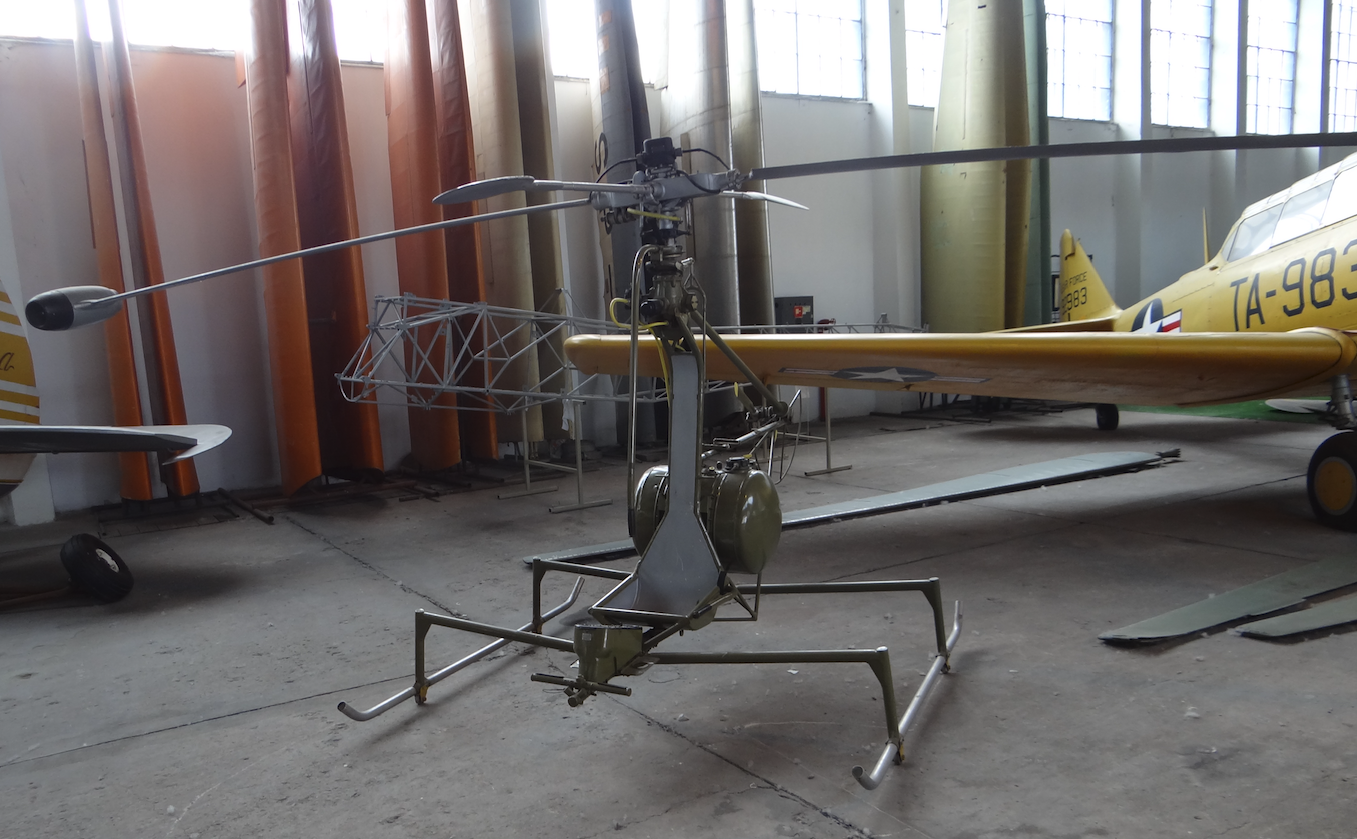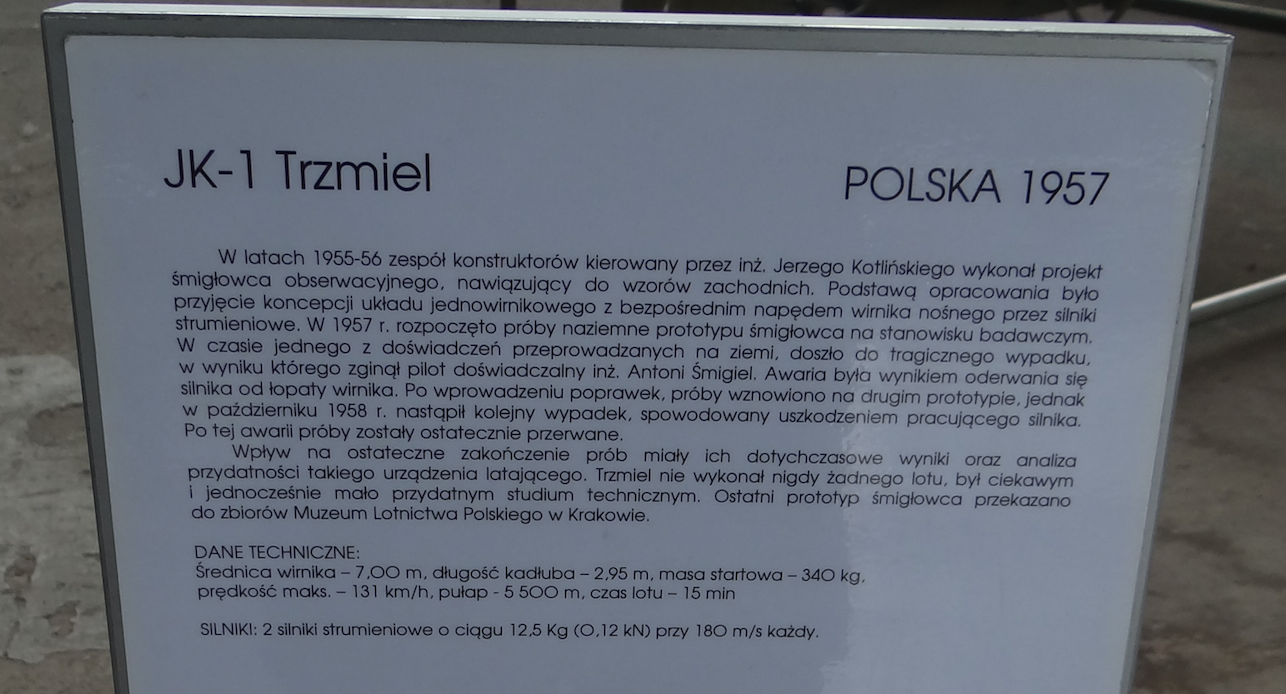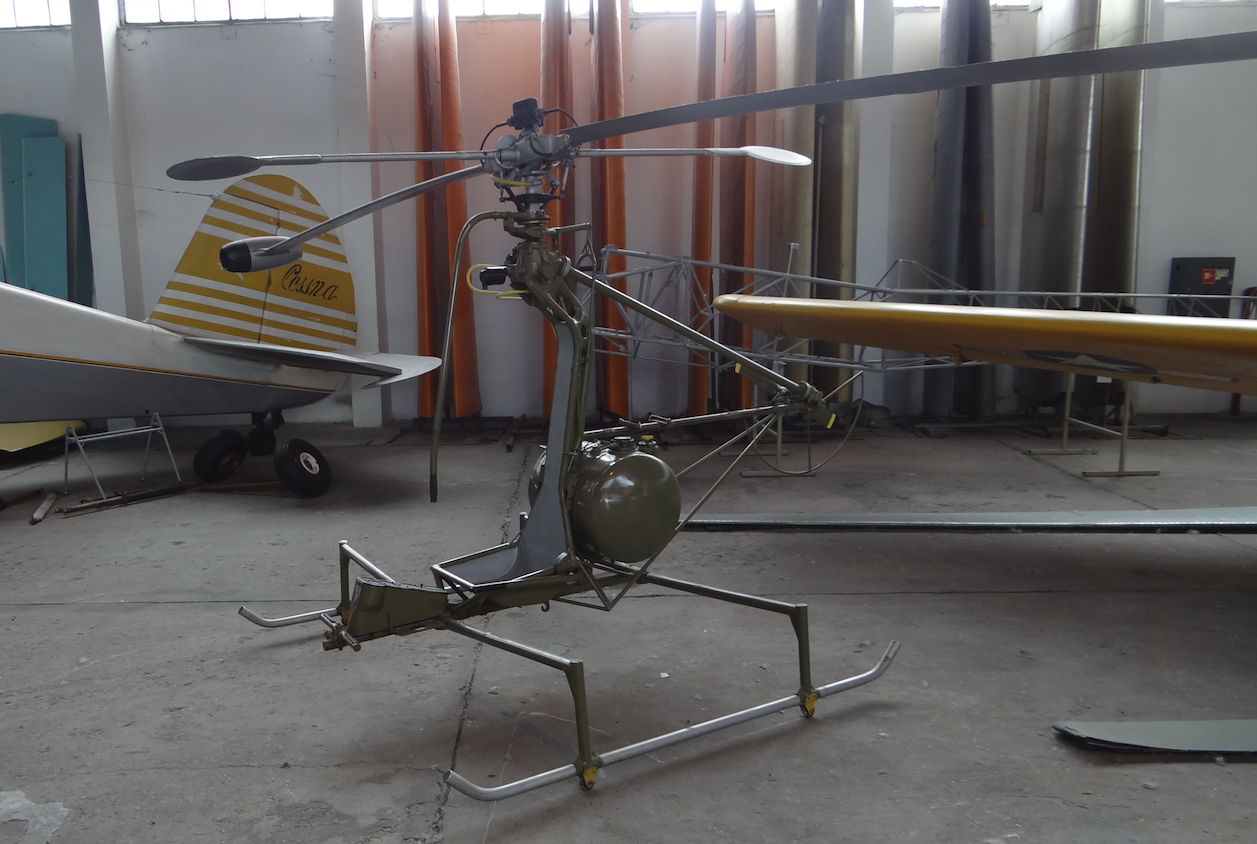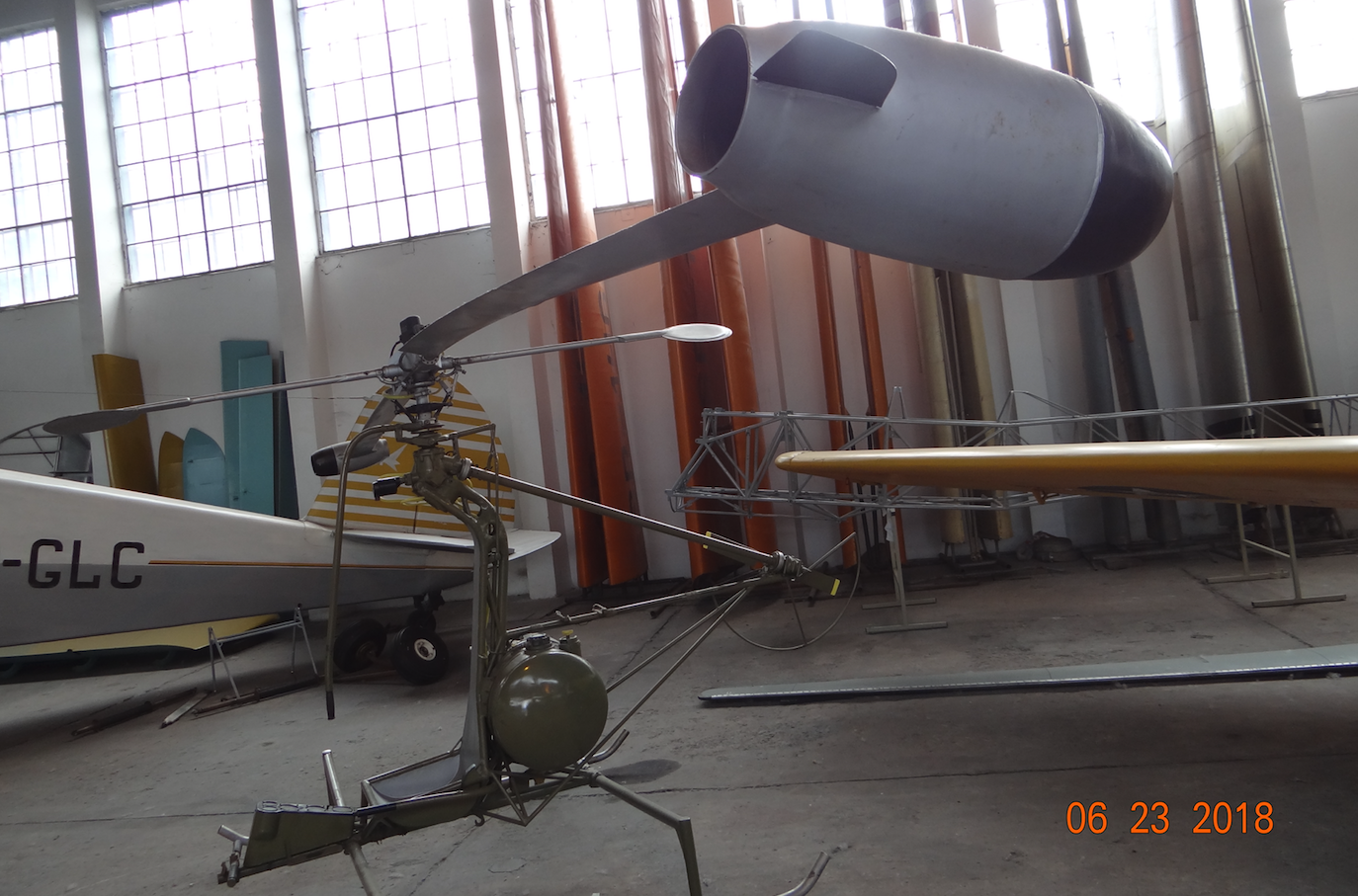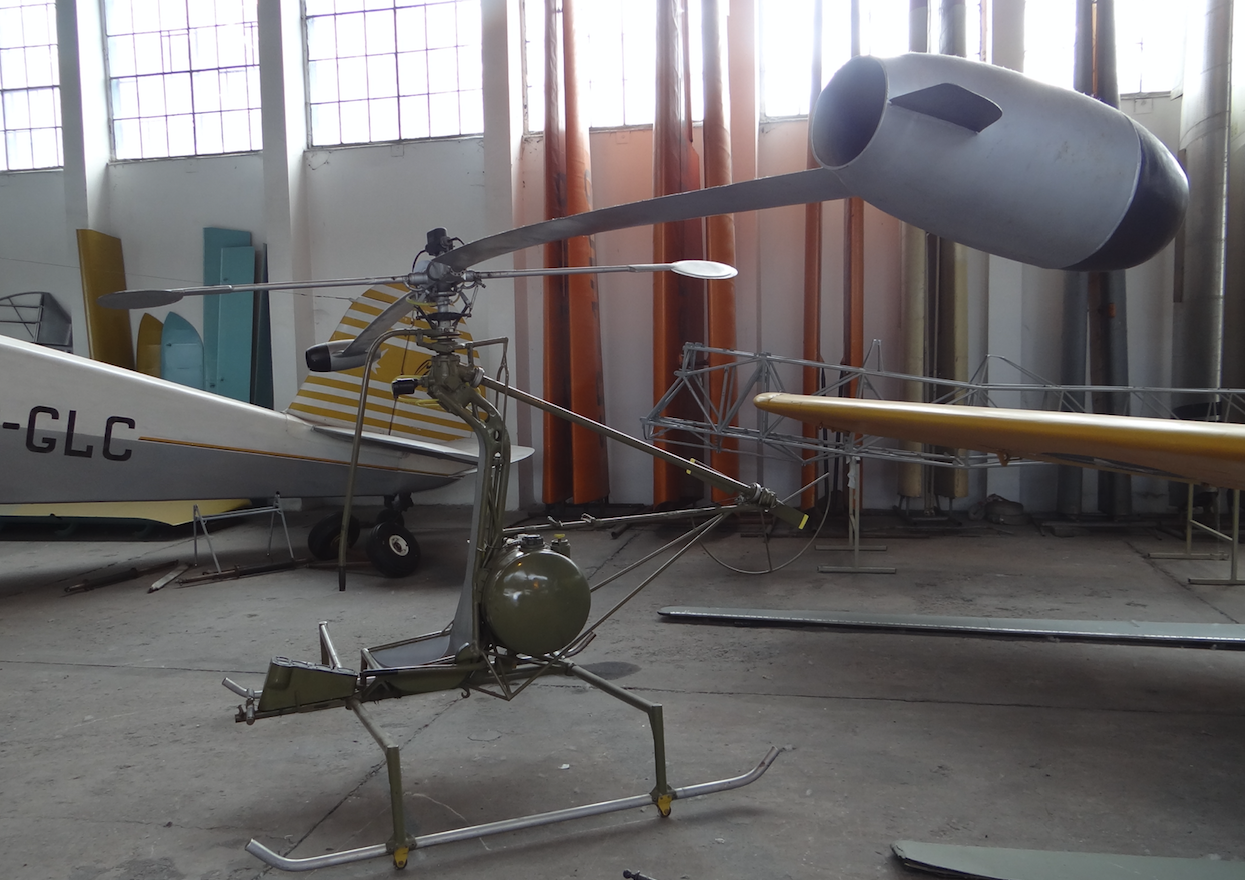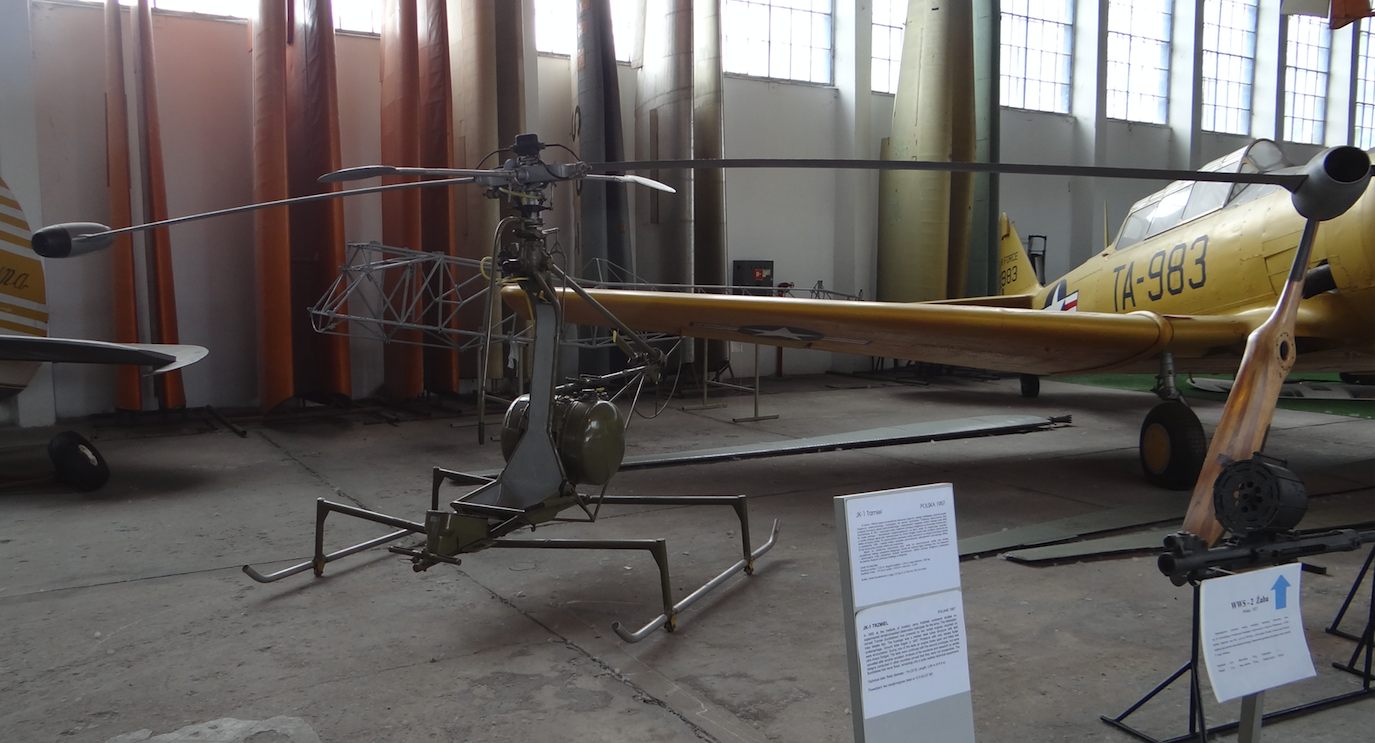Kraków 2018-09-07
Instytut Lotnictwa JK-1 Trzmiel.
150b Section 1957 year. Poland.
History.
In the mid-1950s, the idea of a light single-seat helicopter became fashionable. This type of helicopters was built in the USA, France and the Netherlands. Some of these helicopters went into serial production: YH-32 Hornet in the USA and H-3 Kolibre in the Netherlands. Therefore, one should not think that the JK-1 helicopter was a bad idea. Pioneering work on a similar helicopter was undertaken by a team of designers led by engineer Jerzy Kotliński. The work was carried out at the Institute of Aviation in Warsaw on behalf of the Polish Army. The helicopter was supposed to be a simple structure, without a housing and a closed cockpit. The tasks of the helicopter were to include patrolling and liaison tasks.
The most interesting, however, was to be the modern drive. It consisted of two ramjet engines, which were placed at the ends of the main rotor blades. The two engines were of the jet type, ramjet. Ramjet engines were built by doctor engineer Stanisław Wójcicki. The engines were created in four different versions. All engine prototypes were characterized by small dimensions and low weight. The engines mounted on the helicopter had a thrust of 0.12 kN at a speed of 180 m/s. The fuel lines for the engines were placed in the main rotor blades.
The helicopter project was developed in 1955-1956. In 1957, the first helicopter prototype was built at the Experimental Production Plant. It received the designation JK-1 Trzmiel. The name JK-1 comes from the initials of the main constructor – Jerzy Kotliński
On June 15, 1957, the helicopter was set up on a test bench and tests began. In order for the ramjet to work, it had to have a certain forward speed. An electric motor was used to spin the main rotor. In the future, it was planned to use small solid rocket engines.
The trials of the first prototype lasted only a week. On June 21, 1957, during one of the next tests, a tragedy occurred. One of the engines broke off. As a result, test pilot engineer Antoni Śmigiel died. Other people were injured: engineer Bronisław Żurakowski, mechanic Wacław Gipsiak. The helicopter was destroyed.
After some time, tests were resumed on the second prototype. The second prototype had several design changes. For example, the stiffened tail boom was different. Detected defects were systematically removed. A third helicopter prototype was built. The tests lasted until October 1959. The program was discontinued at the end of 1959 without the first free flight.
In 1958, the engine also broke off. No one was injured because the tests were conducted remotely, automatically. This subsequent failure was the main reason for stopping further work. The preserved JK-1 Trzmiel prototype was on display at the Museum of Aviation and Astronautics in Krakow. Currently, it is the Polish Aviation Museum in Krakow.
Construction.
The design of the helicopter is spatial. The drive consists of two jet engines. 100 liter fuel tank.
T-T data of the JK-1 Trzmiel helicopter:
Fuselage length 2.95 m. Height 2.14 m. Rotor diameter 7.0 m. Curb weight 140 kg. Payload 200 kg. Take-off weight 340 kg. Top speed 131 km/h (calculated). Cruising speed 105 km/h (calculated). Maximum climb vertically 10 m/s (calculated). Maximum ceiling 5,500 m (calculated). Flight range 20 km (calculated). Flight time 15 minutes (calculated).
Tally.
Three prototypes were built. One remaining helicopter is in the Polish Aviation Museum in Krakow.
Written by Karol Placha Hetman

